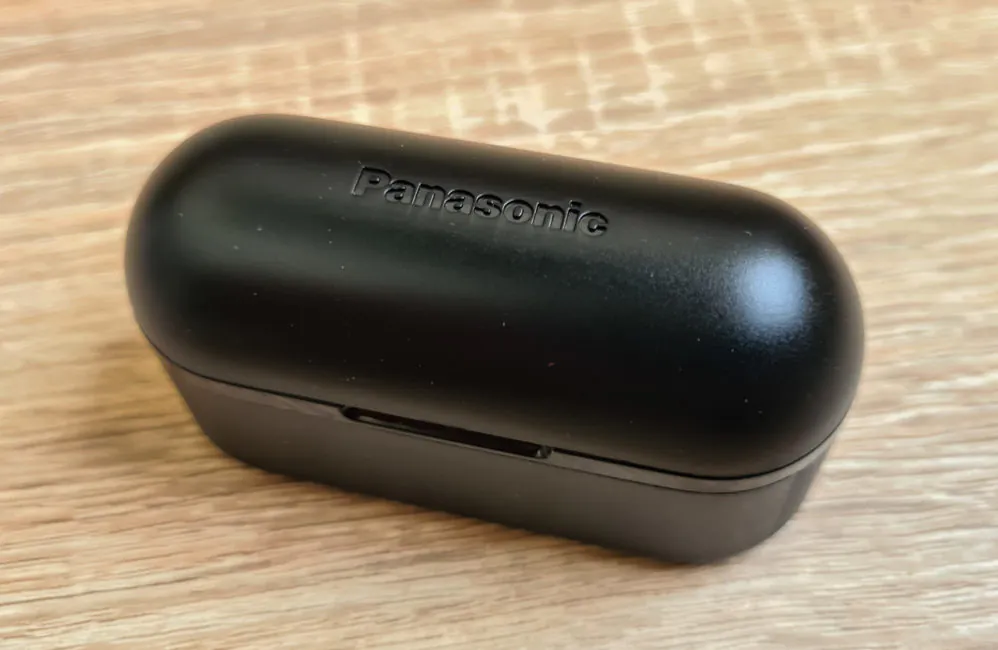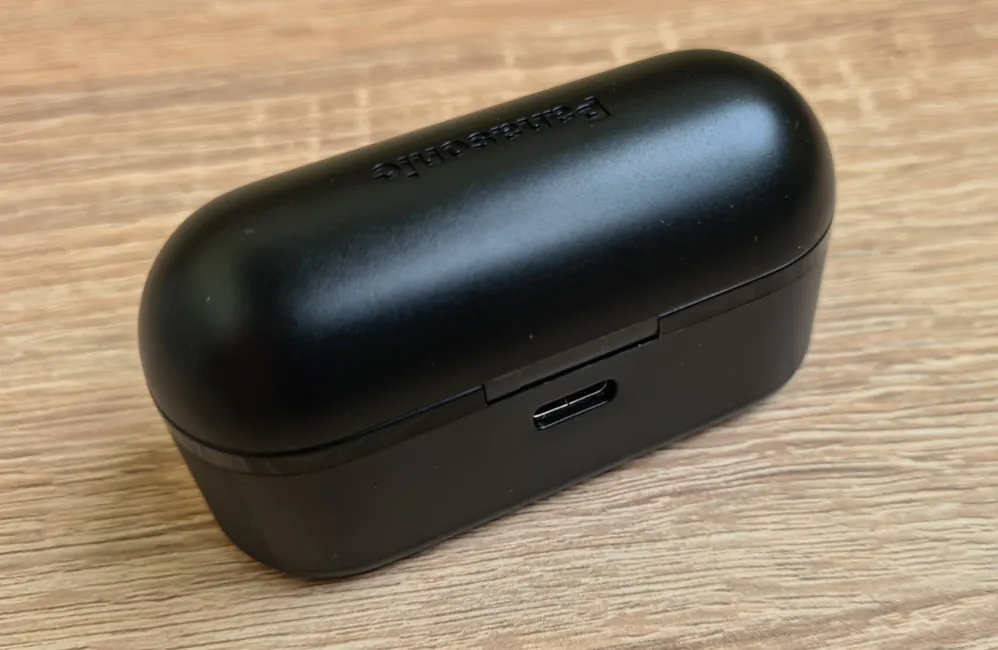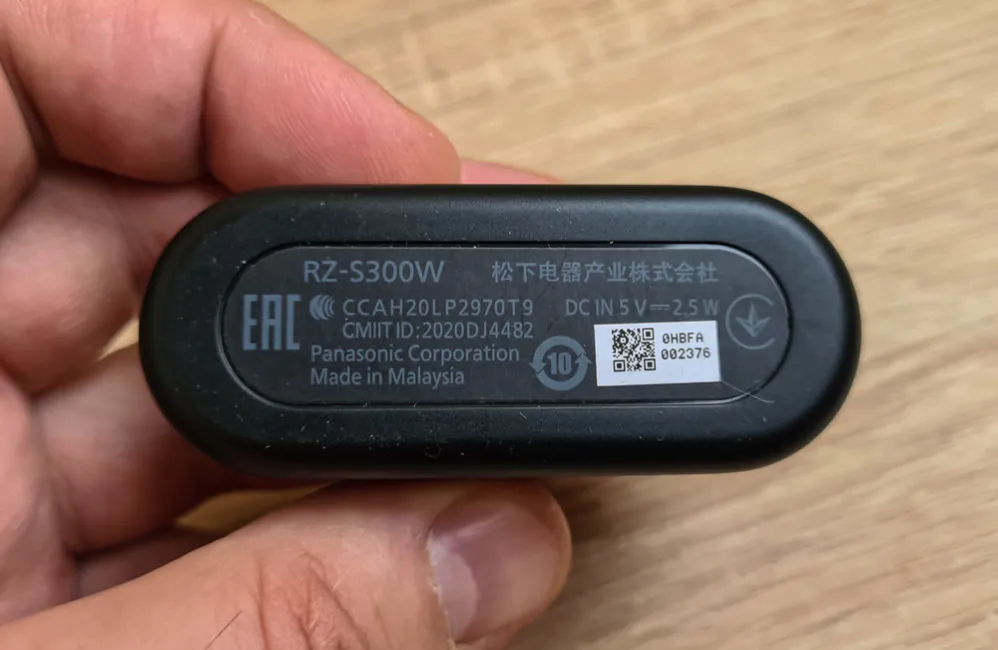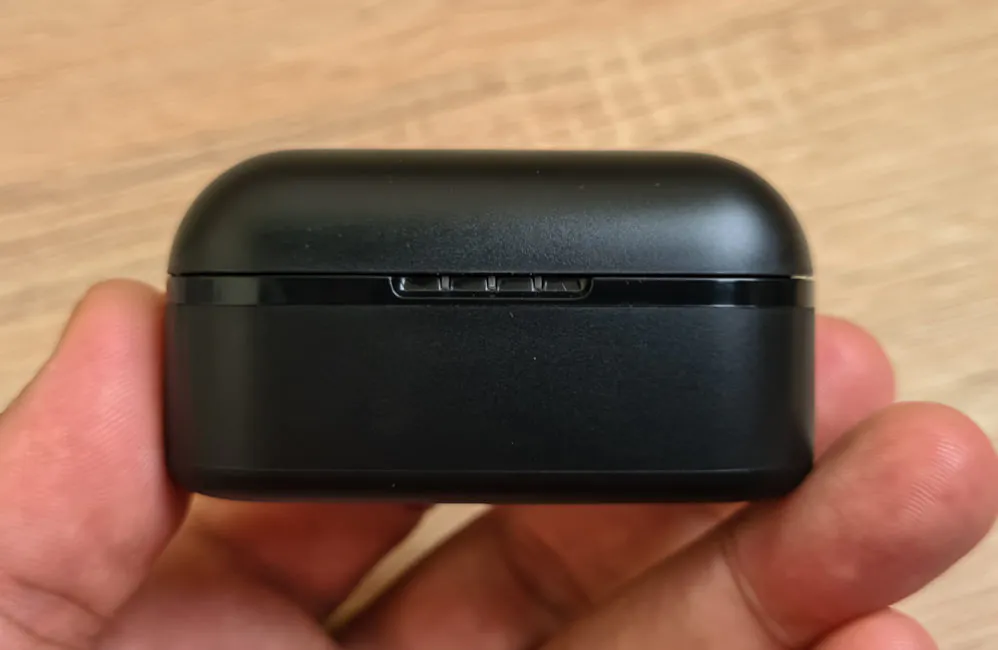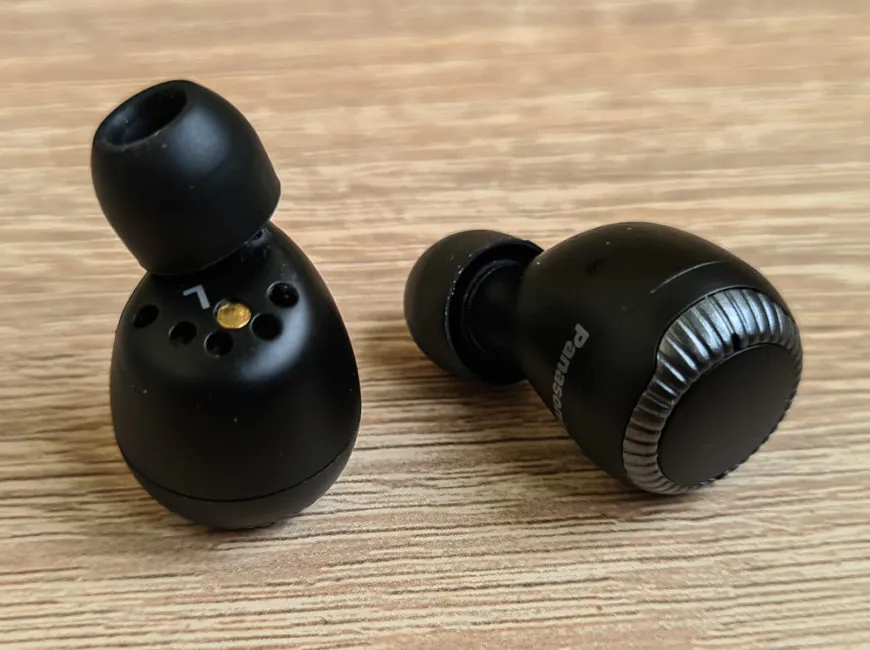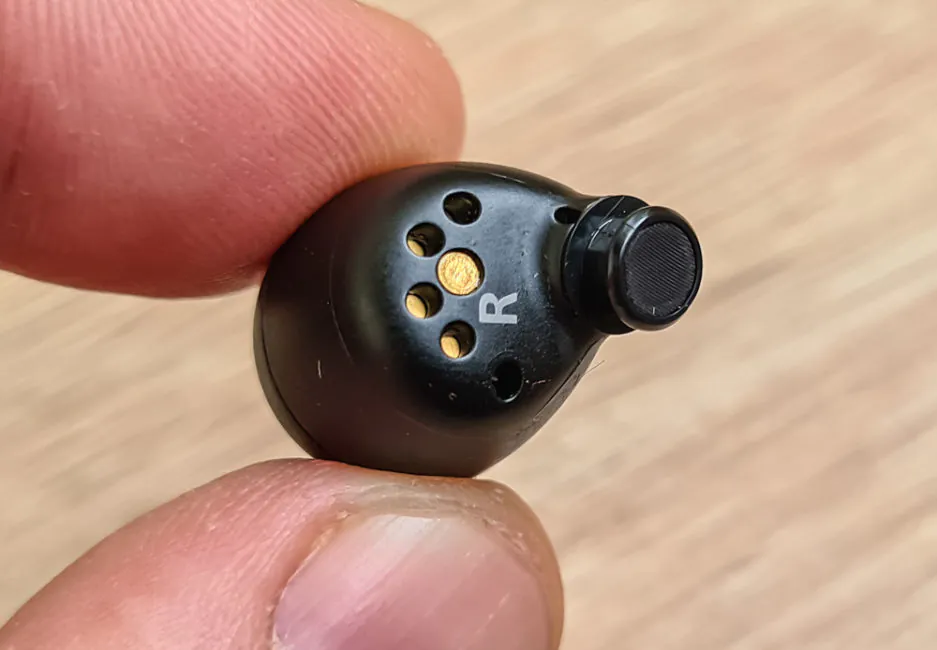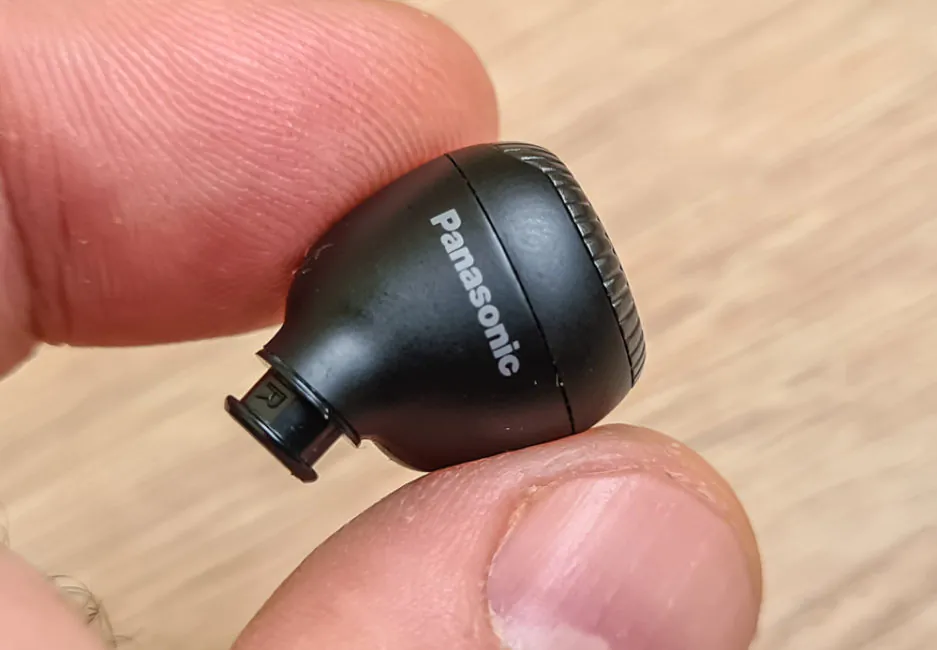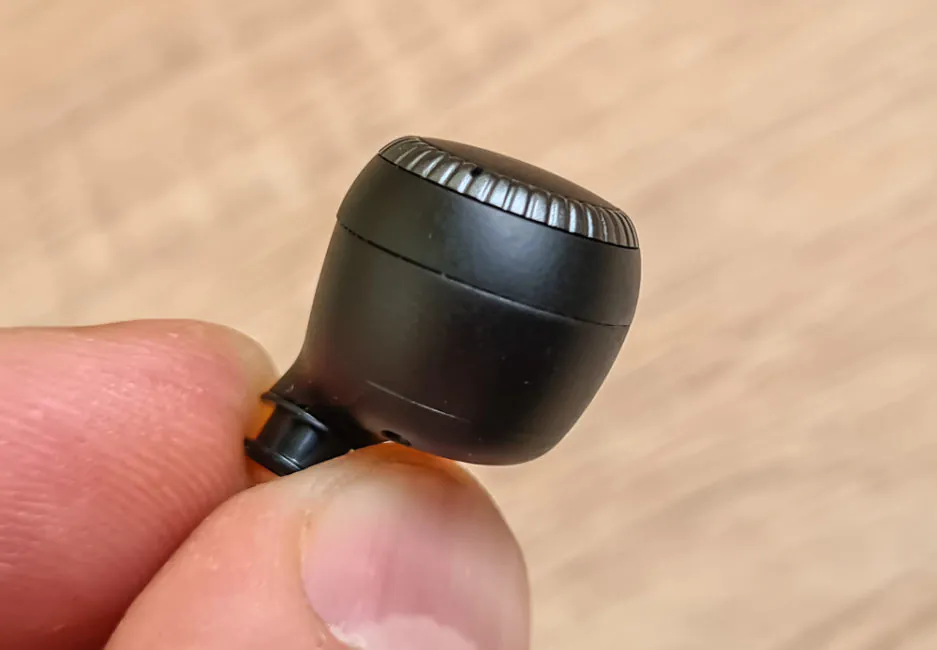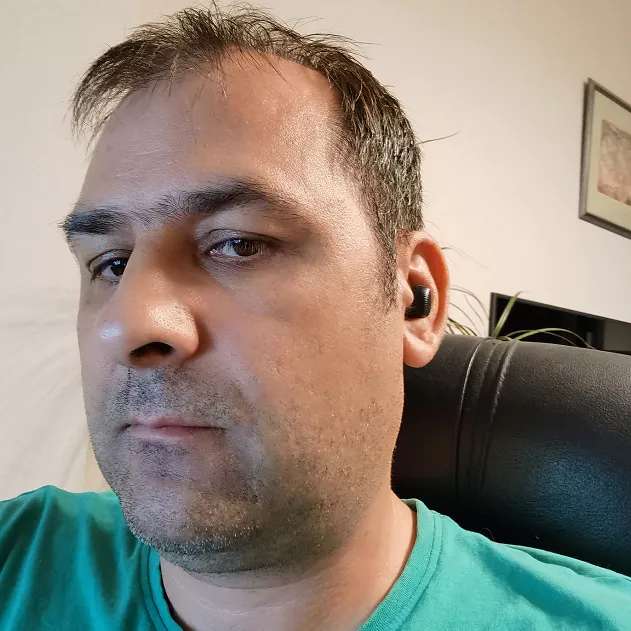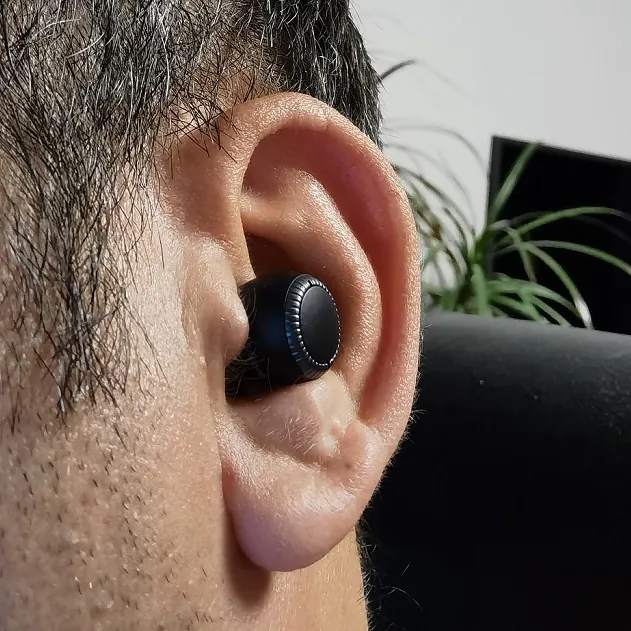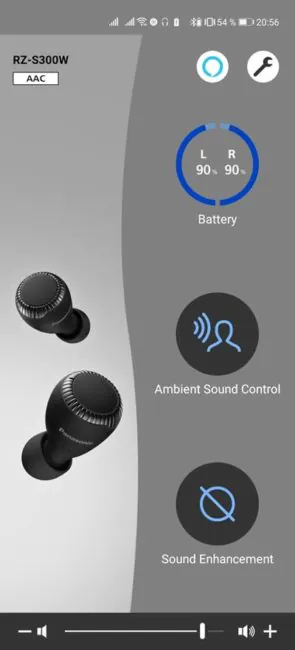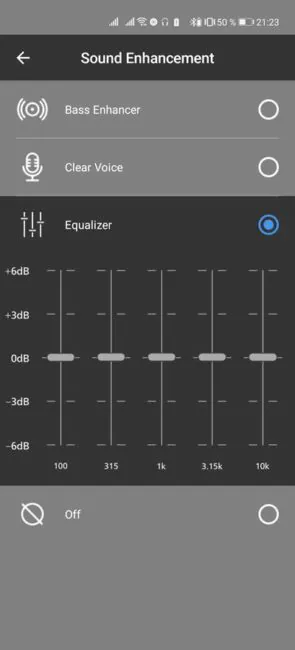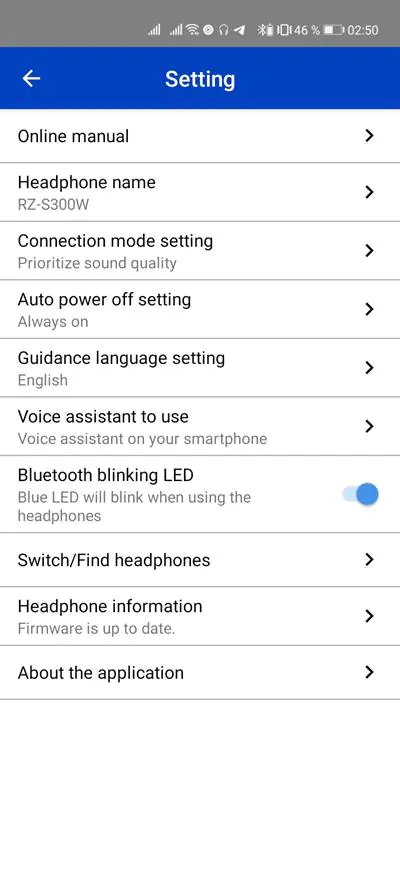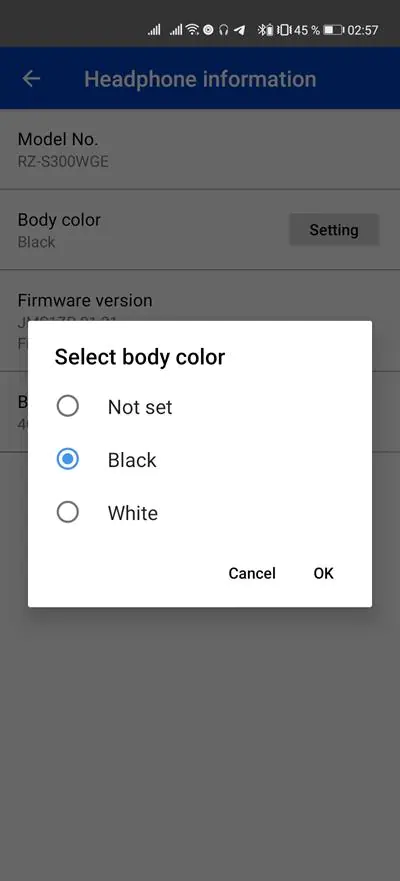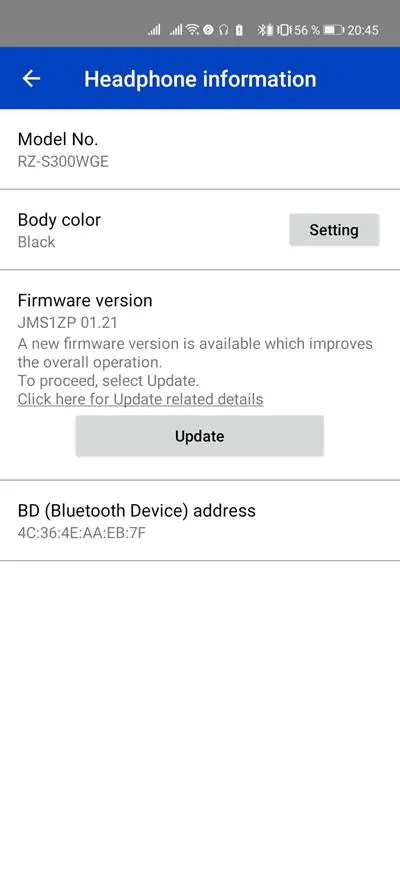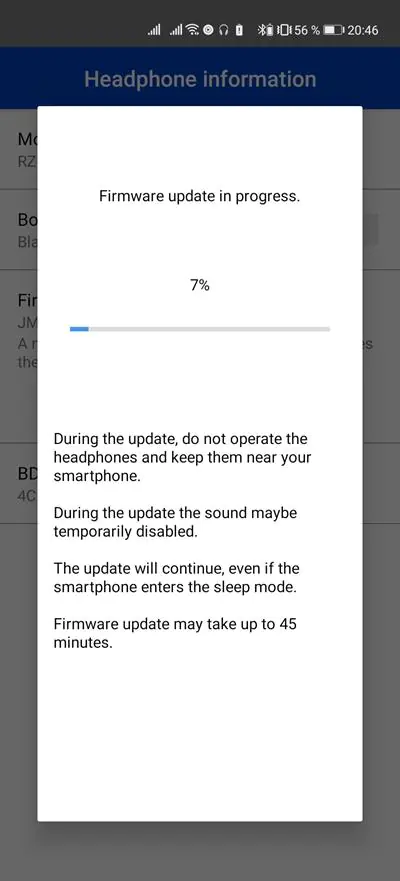© ROOT-NATION.com - Use of content is permitted with a backlink.
Panasonic recently unveiled its first two fully wireless headsets. About time, right? However, better late than ever. And I’m very interested to see what one of the veterans of the personal audio industry has to offer its consumers. There are 2 models in the TWS line – one cheaper and one more expensive. Today I have a simpler version on my review – Panasonic RZ-S300W. And I will try to test a more advanced model a little later.

The smartphones I used to test the headset and the codecs used:
- Huawei P40 Pro – AAC
- Samsung Galaxy S20+ – AAC
Positioning and price
The cost of the headset is average – about $100. There are a lot of offers in this price range, and there are quite good competitive models that I tested, for example, Huawei FreeBuds 3i and Tronsmart Apollo Bold with active noise control. But our hero does not have this feature. Although some other important features are announced. And of course, this is the well-known Panasonic, and not some Chinese company with a weird name. But is the brand strong enough?
Equipment and specs of Panasonic RZ-S300W
As we have already found out, this model does not have active noise control while listening to music. Of the main features, I can mention 6 MEMS microphones, 3 in each headphone. We have long been accustomed to TWS equipped with two microphones in each earbud. They work according to the traditional scheme – the first picks up your voice, and the second picks up the noise, which is then cut off by software. The problem is that part of your voice spectrum is clipped along with the noise. And the louder the noise, the worse the voice quality will be. This disadvantage is eliminated by the third internal microphone, which picks up your speech from the inside of the ear behind the silicone earbuds, where there is almost no noise, which significantly improves the timbre of the voice that is transmitted to your interlocutor. In general, any headset with 3 microphones is better than 2 microphones. And the Panasonic RZ-S300W has just internal microphones.
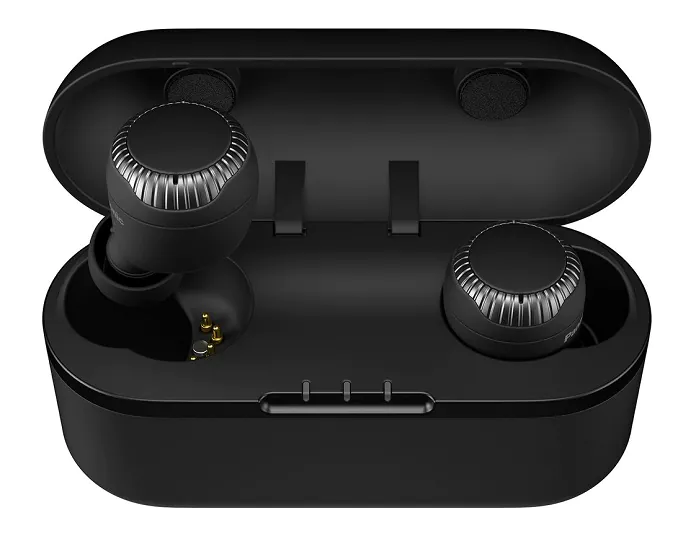
Further, the Ambient sound feature, which is also present in many flagship models now and is gradually being implemented in the middle budget segment. This is a pretty useful feature that allows you to turn earbuds with closed sound design into open earbuds at any time. Of course, by using the same external microphones. The sounds of the surrounding world will be mixed into the music and amplified. If you pause playback, you get a kind of hearing aid and you can talk to people without removing the headphones from your ears. Sound permeability brings some additional experience to the headset. The main pros is increased security. On a city street, you will hear the sound of a car passing by and can hear it if anyone calls for you.
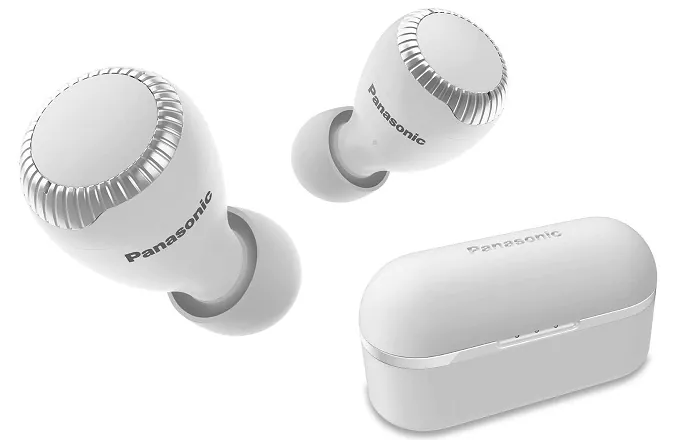
What else I can note after studying the characteristics of the RZ-S300W: full touch control, IPX4 protection and support for the AAC codec. In addition, the manufacturer claims improved omnidirectional antennas that are located around the control sensors. In theory, this should provide a reliable connection to the smartphone. A good battery life is also mentioned – up to 7.5 hours on a single charge of the headphones and about 30 more hours using the bundled case. Quite decent performance. But let’s check how it all works in practice.
What’s in the box
In this regard, nothing special, but everything you need is there. In a solid box, we find a pair of headphones, a charging case, a charging cable, a set of three additional pairs of tips of different sizes.
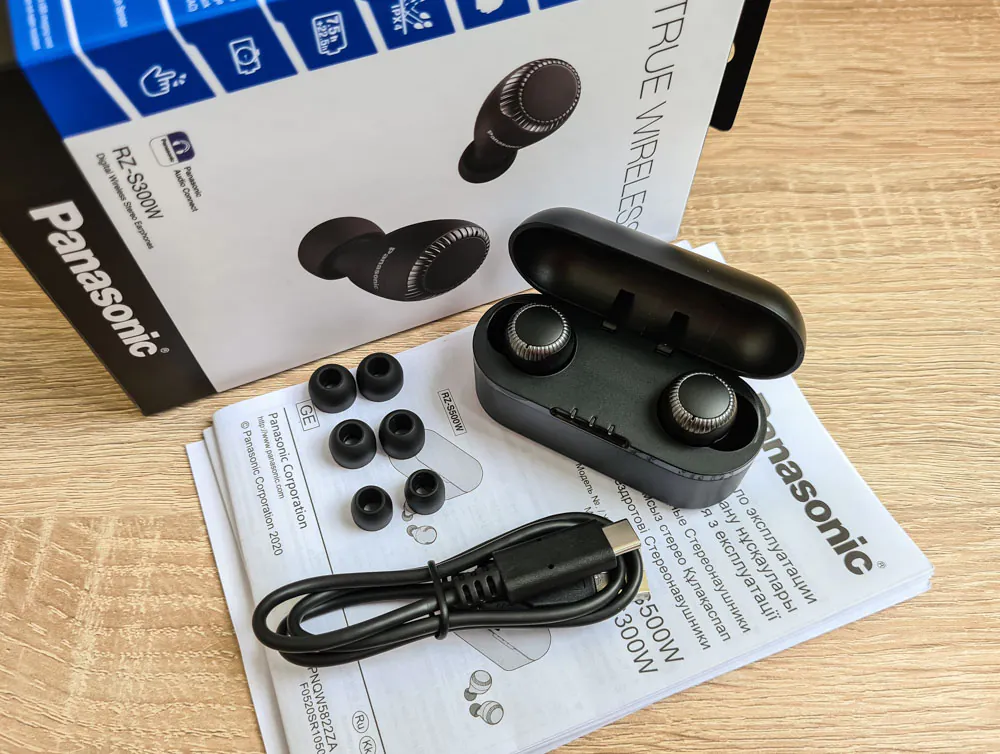
There is also a manual. In addition, the instruction can be downloaded from the official website.
Design, materials, build quality
The Panasonic RZ-S300W earbuds have a modest utilitarian design. The material is simple matte plastic. But rather thick and durable.
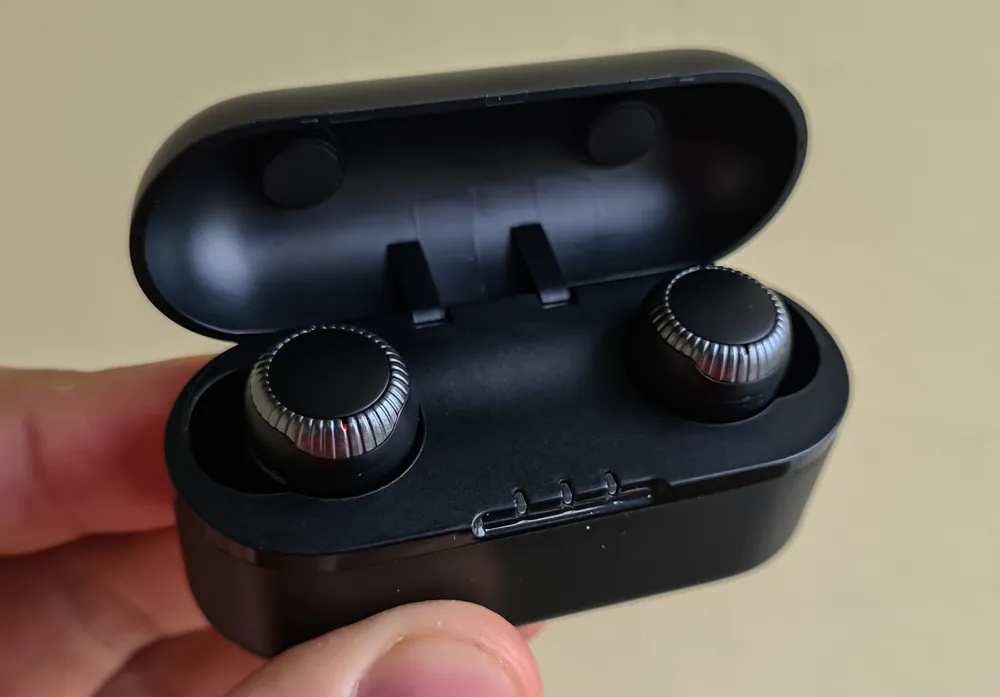
The case is in the form of a small box with a domed lid. It is relatively thick and rather tall. There’s a USB-C port on the back for charging. In front, in a notch under the kid, there are three white indicators showing the current charge level of the case.
The body of the charging case looks cheap, especially the single-layer lid, which also seems to be rather flimsy. Although this question is not critical for me, some headsets for $30-50 have cases that are much more solid.
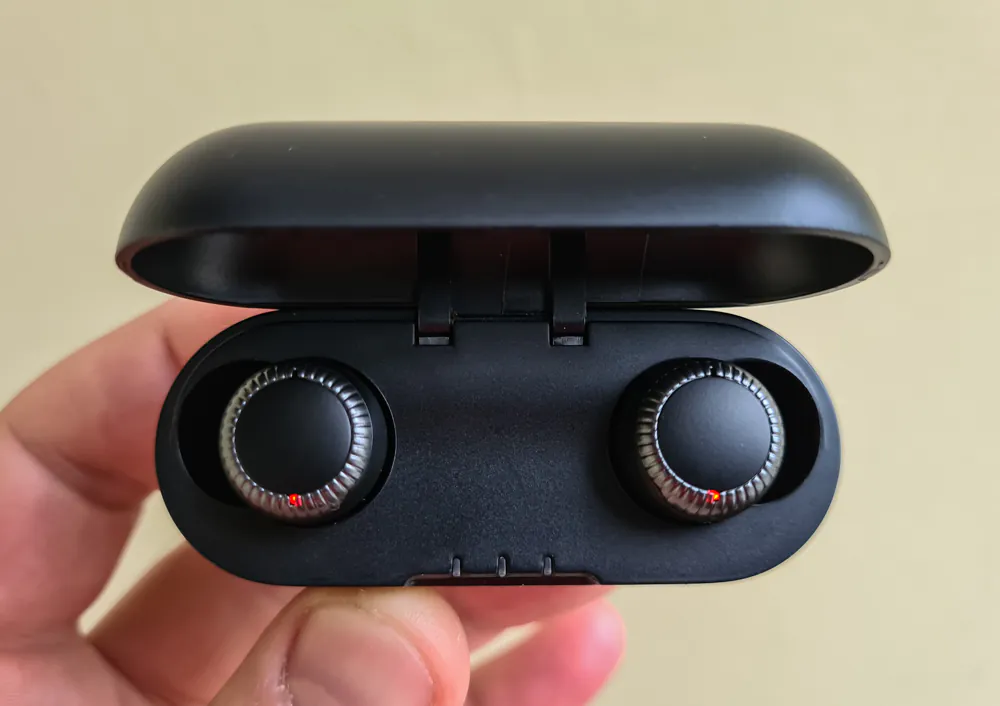
It’s obvious that the Japanese did not bother much about this. The only “decorative element” of the case is a thin glossy strip in the area of the indicators along the perimeter of the case. And the shiny Panasonic logo embossed on top.
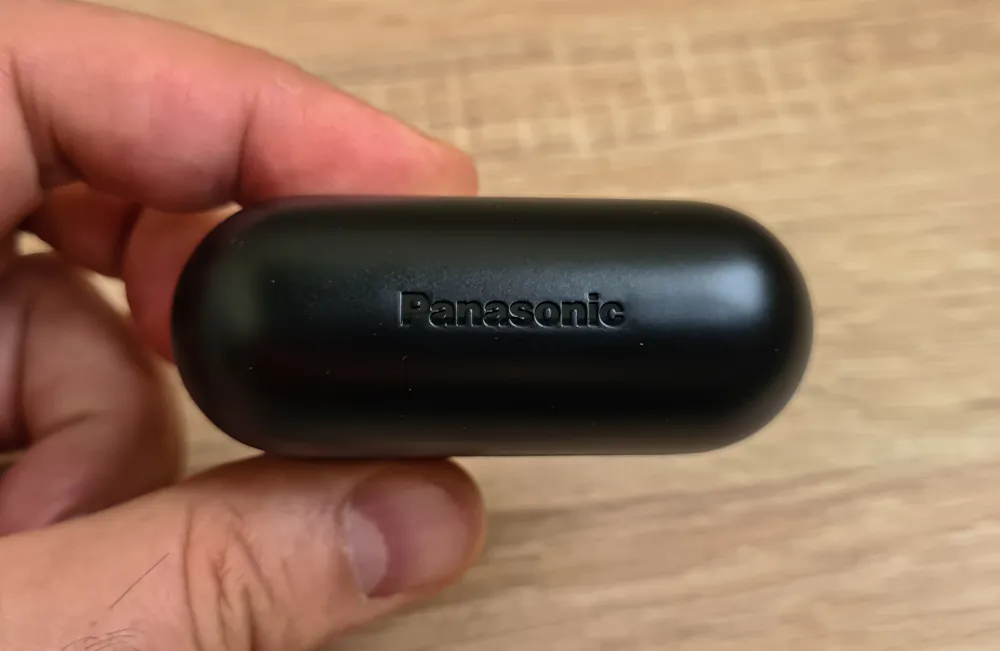
But attention to detail should also be noted. On the inside of the lid there are 2 dampeners for fixing the headphones in place so that they do not dangle when shaken.
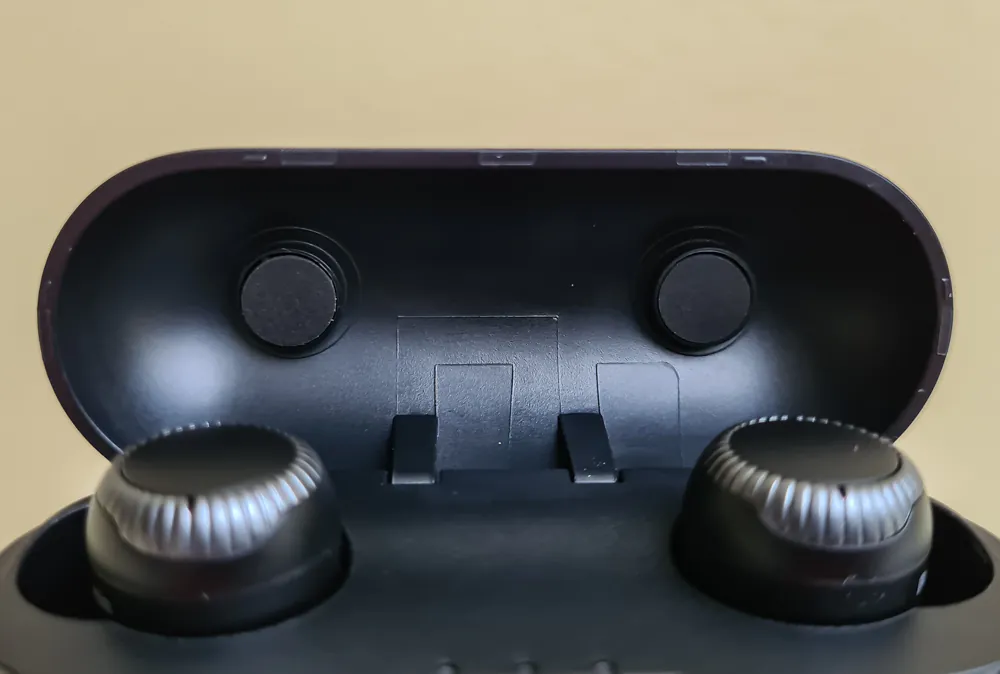
The main part of the case with electronics and battery is also modest in appearance, but it is assembled firmly and reliably – it does not creak nor bend. Although the light from the active indicators shines through the charging port. So, cheap and practical. But it does not collect dirt and scratches.

Let’s move on to the earphones. They are also not particularity stylish, but they look nicer than a case. The earbuds remind me a bit of Panasonic cassette players. There is also black plastic and a silver ring with a notch around the touch button.
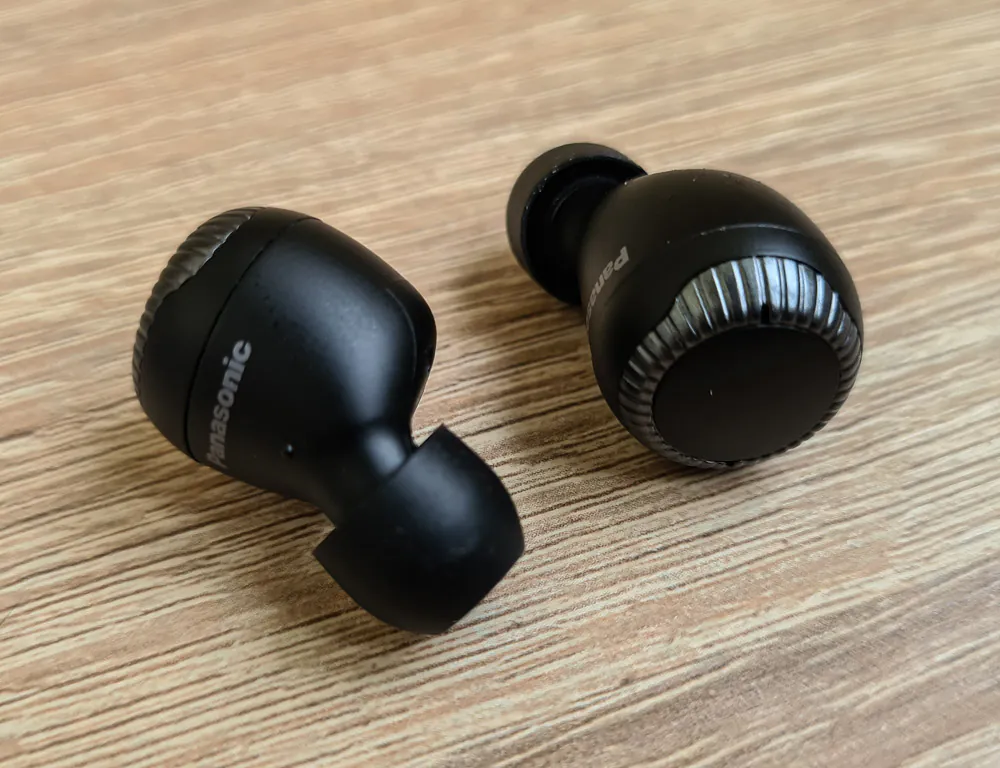
Briefly about the elements. Outside in a silver ring is the opening of the first microphone at the top. At the bottom of the bezel there is an LED indicator that glows red during charging and blinks blue in working condition. There is also a logo, 4 gold-plated contacts, a magnet (presumably), one large hole and 2 more small ones about the purpose of which I can only guess, but one of them is for the second microphone.
At first glance, the shape of the earphone is uncomplicated – a barrel shape with a sound guide coming out of it at an angle, ending in a nylon mesh and a silicone ear tip. But it’s not that simple. More on that below.
Ergonomics
We’ve discussed the case already, and there’s nothing to add. Its purpose is purely utilitarian. It charges the earphones, and indicates the charge level. It won’t fit in a tight pocket, since it is thick and tall. Rather, it is an option for a purse or backpack. Thanks for the USB Type-C charging port, it’s convenient.
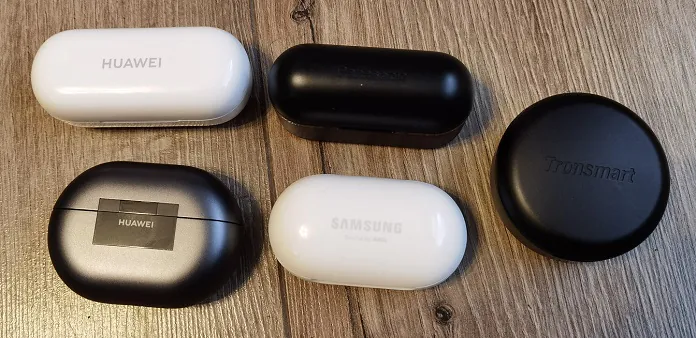
The earbuds are really tiny. Although they seem to be too big in height, but the fit is deep, because of this, by the way, I use smaller tips, because the sound guide is long and almost directly delivers music to the eardrum. In general, I expected the headphones to stick out a lot from my ears, but this did not happen. Quite the contrary.
And most importantly, after inserting the headphones into your ears, you should twist them a little around their axis. This is exactly what the “ring” is for. You kind of screw the headphones deep into the ear canal. And find their best position which guarantees the best possible quality.
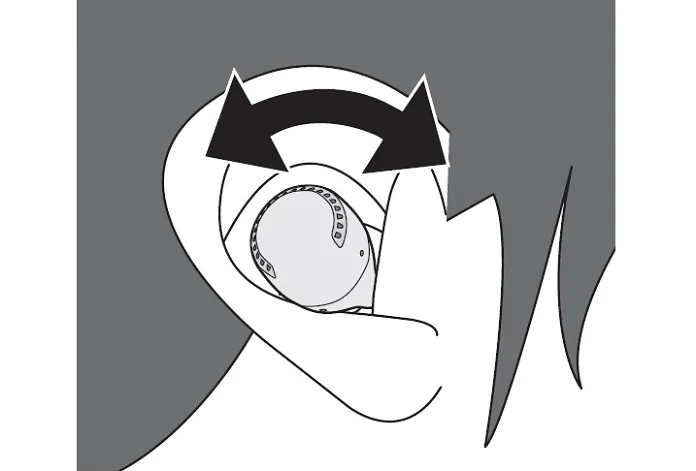
What a surprise, the Japanese engineers know a thing a two about sound. They managed to create compact, yet versatile earbuds. Therefore, the first impression is deceiving. The design of the earbuds is very intricate in terms of ergonomics. And by the way, the ear tips are great – dense, but soft.
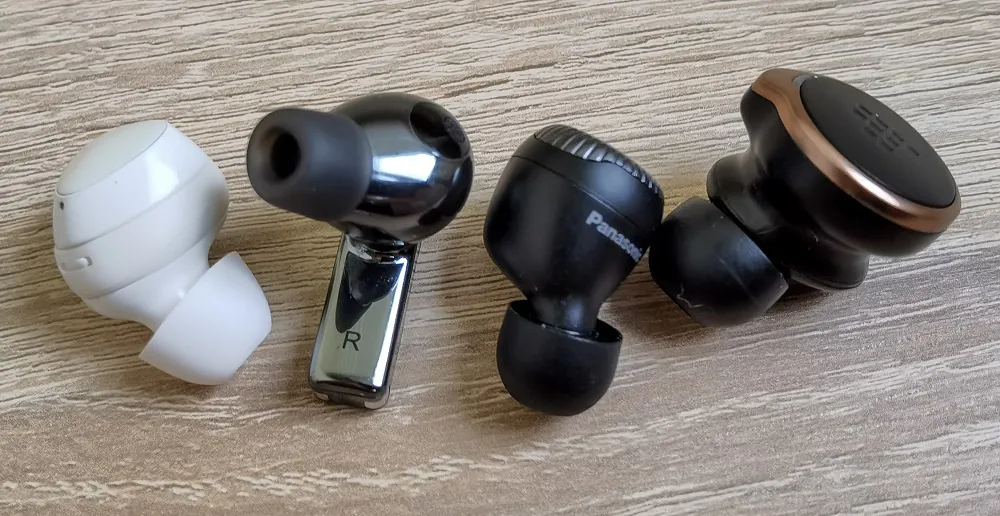
Panasonic RZ-S300W are great for outdoor activities, healthy lifestyle and sports. Also, the form factor allows you to lie on your side with your head (ear) on the pillow, or wear the buds under a thick hat in winter. Because, again, the headphones are almost completely buried in the auricle. Which is great!
Connection and software
One of the main factors that determine the “seriousness” of any TWS headset for me is the availability of an app. And it’s here! Of course, you can simply connect the RZ-S300W to your smartphone via the Bluetooth menu. But I don’t recommend it. Install the Panasonic Audio Connect application on your smartphone first and get a lot of additional features when using a headset. The app is available for both Android and iOS.
When you turn it on for the first time, the app will find the headphones by itself and connect them to the smartphone. Further, the following functions and settings will become available to you: displaying the charge of the earbuds, the current codec, activating Ambient Sound and improving the sound. The last menu has just 2 preset equalizer presets (bass boost and clear voice), as well as manual adjustment of the parameters to your liking.
Let’s check the settings. There are the following points:
- Link to manuals – might be helpful.
- Headphones renaming – a unique name will help you distinguish your headphones from strangers in the Bluetooth range.
- Connection priority: music quality or connection reliability. I’ll tell you right away – the second option will simply switch the codec from AAC to SBC.
- Automatic shutdown when idle – 5, 10, 30 or 60 minutes. Leave the earbuds always on when using it in a car, for example.
- Languages. Japanese, English, German, French languages are available.
- Voice assistant type – Amazon Alexa and “everyone else” or turn off the feature completely.
- Deactivation of the LED indicator so that it does not flicker in the dark.
- Switch or search for headphones. Here you can connect other headphones or try to find the current ones. But as I understand it, the app just remembers the last location of the connected headset and shows it on the map. You can also increase the volume to maximum and send a sound signal to the headphones and try to find them – indoors, but in complete silence, it may work.
- A couple of items with information about the headphones, you can change their color in the application and update the firmware.
- App information.
As you can see, the Panasonic Audio Connect app is simple, but quite functional and it makes sense to use it in conjunction with a headset.
Control
The sensors work reliably and virtually error-free. The controls are easy, and most importantly, they cover all the functions of the headset. To control playback, conversations and call a voice assistant, single, double and triple taps are used, as well as holding your finger on the button. A detailed control diagram can be found in the manuals. You can also reboot the device this way.
Sound
So we come to the most interesting part. The sound in the headphones is excellent. Well… it’s very Japanese; what I mean is that it reminded me of my youth, I even felt nostalgic. For many modern music lovers, it may seem unusual and even mediocre. But this is not the case. The initial spectrum calibration is highly averaged. That is, by default, out of the box, the music sounds smooth and even a little flat, but at the same time it is clean and detailed. You hear all frequencies, the highs are remarkably sonorous and clear, but for my taste there is not enough bass. But this can be fixed easily thanks to the app. Also, this mode adds a little surround sound.
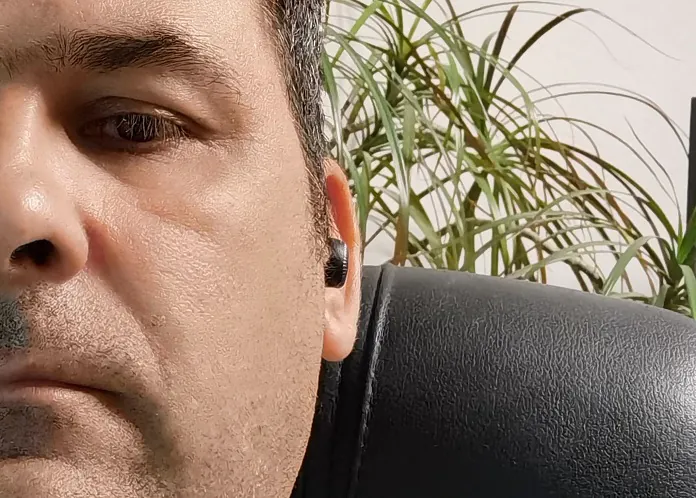
The potential of the built-in 6-mm drivers is good, but it can be partially fulfilled using a proprietary app, and best of all, through the built-in effects of a smartphone (such as Dolby Atmos or Huawei Histen).
And you know, I really like this approach to sound. Because many modern headphones are too into low frequencies, and high frequencies are often not enough. This is when the bass is boomy and too accented by default. And then it is very difficult to get fix that. So, in the case of the Panasonic RZ-S300W, the bass can be easily obtained, simply by using the equalizer.
Voice transmission
As I said, internal microphones work wonders for voice transmission. And in the case of the Panasonic RZ-S300W, this statement holds true. Your voice is very clear. But compared to the competition, this headset has some lag. With very strong ambient noise, the ends of words and phrases are often muffled, especially in the low-frequency spectrum. I don’t know if this is a feature of microphones or voice post processing. Voice transmission also lacks volume and low frequencies. Everything is audible, but the voice is not very pleasant in tone and is too “digital”.
Connection reliability
Panasonic promised a reliable connection, and Panasonic delivered. Apparently, the antennas do work. In any case, the result is obvious. I had no interruptions during normal use (smartphone in your pocket) for a couple of weeks.
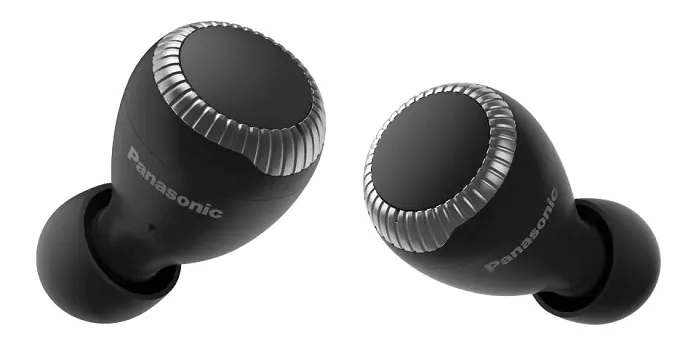
But all of the above applies to situations with close distances (up to 10 meters) and preferably in line of sight of the source (smartphone). With obstacles and especially walls, the headset does not cope very well. In general, this is normal for this price segment. And I want to point out that some amazing things are happening with TWS lately. Most manufacturers have seriously improved the reliability of the connection. Panasonic, too.
Delays
In this regard, the buds also show a very decent result. Of course, there are some microscopic delays. But you can watch YouTube without discomfort, the lip syncing is great.
And to my surprise, there is practically no lag in games either, so the Panasonic RZ-S300W is also suitable for mobile gamers.
Panasonic RZ-S300W battery life
Great result again! The earbuds are equipped with decent 55mAh batteries each. I don’t even know how I managed to fit them into such miniature cases, so that there is still room for all the electronics and speakers. Yes, it is quite possible to get the declared 7.5 hours, and even I got closer to eight when using the AAC codec when I didn’t use the environment mode for a long time. Otherwise, you can safely count on 5-6 hours.
The earbuds can be recharged about 4 times from the complete case, which has an 800 mAh battery. A full charge of the earbuds will take about 2 hours, while charging the case will take about 2.5 hours. It can take 4 hours to fully charge the entire set.
Verdict
The Panasonic RZ-S300W TWS earbuds might look dull, but they have a lot going for them. The first impression can be deceiving, and behind an inconspicuous shell is a decent and truly high-quality Japanese product.

Yes, the design is unconvincing, but hey, the first step is always the hardest. Hopefully more attention will be paid to design in the next models.
The main advantages of the RZ-S300W are: practicality, miniature size (buds, not a case), excellent connection, decent sound, as well as convenient control and great battery life. Among the cons are: materials, design and the build quality of the case. And the software responsible for voice processing should be improved, since it is slightly inferior to competitors.
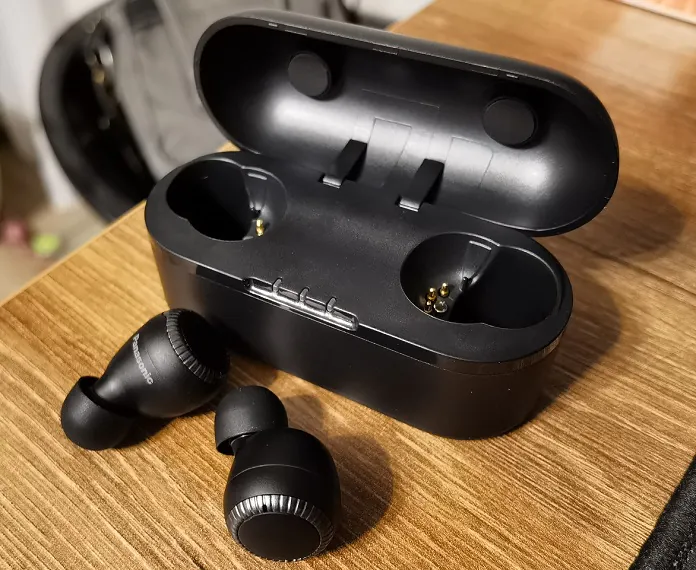
But for its price the product can certainly be recommended. I am looking forward to the model RZ-S500W for testing, as there are a lot of cool features there, such as asynchronous connection of earbuds to a smartphone, ANC and 8mm drivers. So, stay tuned!

Subscribe to our accounts:


